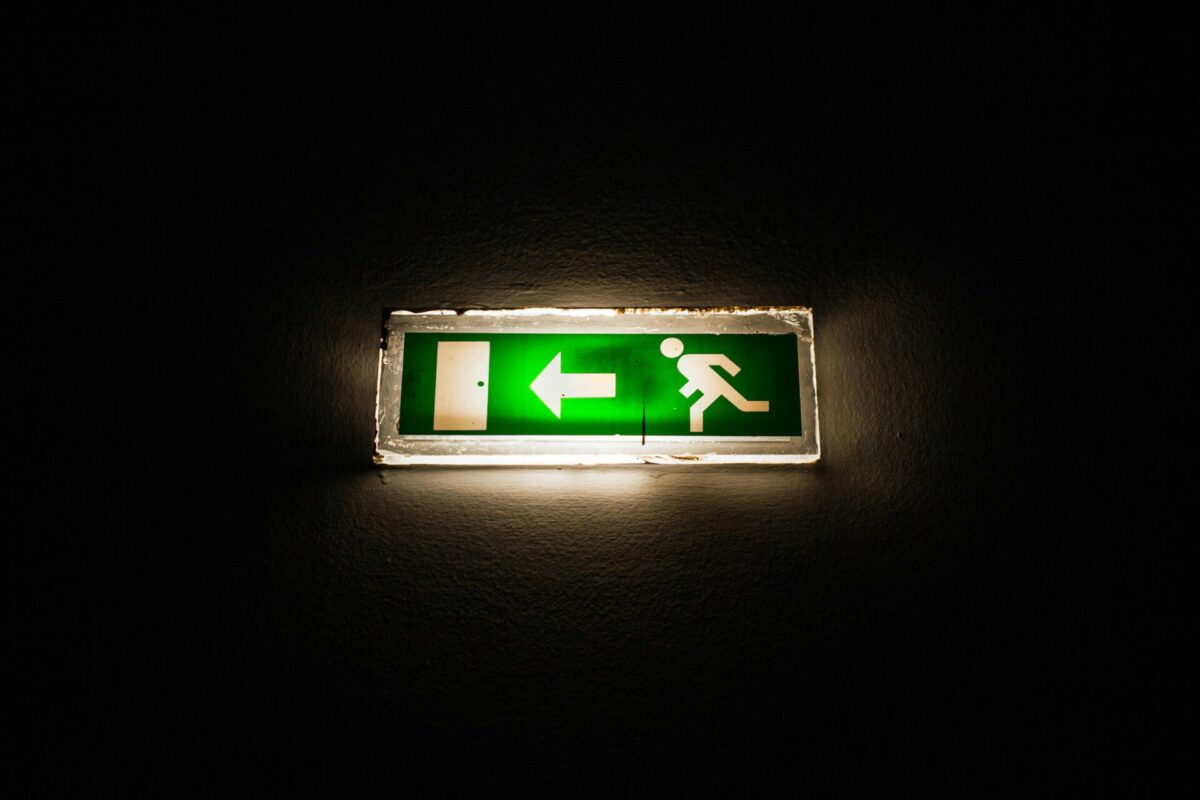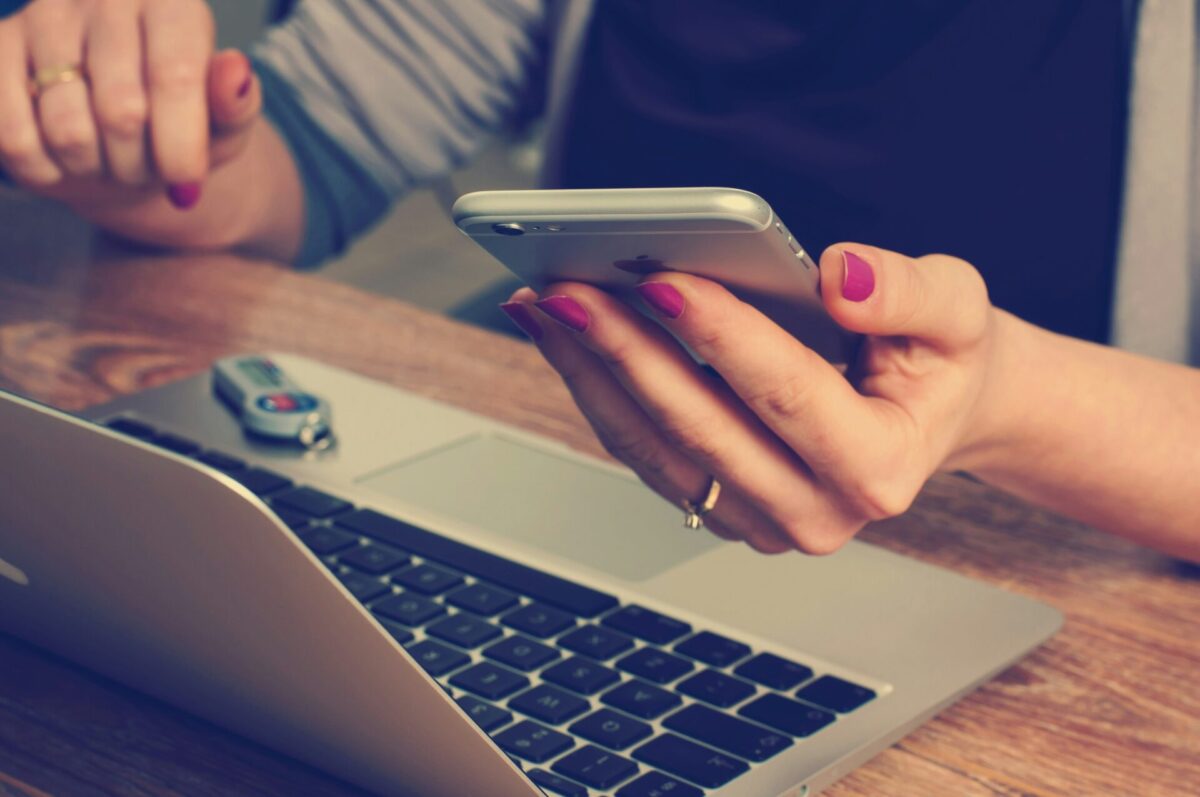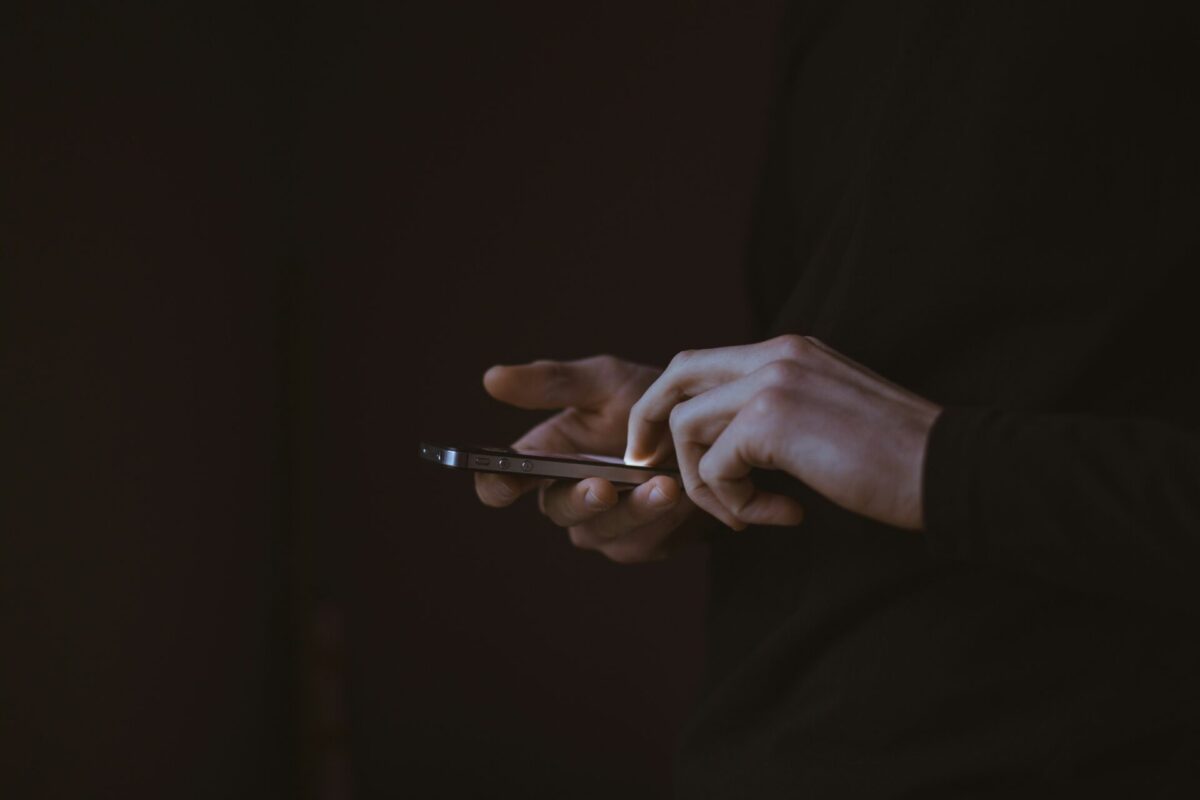In our fast-paced, technology-driven world, taking a break from screens has never been more vital. Many people are turning to a digital detox to reconnect with themselves and their surroundings. This weekend, you can join them by setting aside your devices and focusing on what truly matters. Whether you’re feeling burnt out or simply looking for a fresh perspective, unplugging can bring significant benefits. In this post, we’ll explore easy ways to help you unwind and recharge, making your digital detox both enjoyable and fulfilling.
Understanding Digital Detox: What It Is and Why It’s Important
A digital detox refers to intentionally unplugging from digital devices, such as smartphones, computers, and tablets, for a set period. It’s an opportunity to disconnect from the overwhelming flow of information, notifications, and constant connectivity.
Why is this important? In our hyper-connected world, the incessant use of technology can lead to increased stress, anxiety, and even sleep disturbances. Here are a few reasons why engaging in a digital detox is beneficial:
- Mental Clarity: Taking a break from screens can help clear your mind, allowing for introspection and improved focus.
- Improved Relationships: Stepping away from devices often leads to more quality time with family and friends, strengthening relationships.
- Enhanced Creativity: Disconnecting fosters creativity. By breaking free from digital distractions, you might find inspiration for new hobbies or projects.
- Better Sleep: Reducing screen time, especially before bed, can significantly improve your sleep quality.
In a nutshell, a digital detox offers a refreshing reset that can lead to a more balanced and fulfilling life. So, why not consider giving it a try this weekend? Embrace the benefits of a device-free period and discover what it means to unplug and recharge!

Signs You Need a Digital Detox
Recognizing the signs that you need a digital detox is essential for maintaining a healthy relationship with technology. If you’re feeling overwhelmed or disconnected, it may be time to take a step back and unplug. Here are some key indicators that a digital detox could benefit you:
- Constant Fatigue: If you find yourself feeling tired despite getting enough sleep, it could be linked to excessive screen time. Screens emit blue light that disrupts your sleep cycle.
- Increased Anxiety: A constant barrage of notifications and social media updates can heighten your anxiety levels. If you feel anxious or irritable when you’re away from your devices, it’s a sign you need a break.
- Decreased Productivity: Struggling to focus on tasks without reaching for your phone? If you notice distraction levels rising, a digital detox can help restore your concentration.
- Social Withdrawal: If you’re spending more time with your devices than your loved ones, it might be time for a change. A digital detox encourages face-to-face interactions.
- Sleep Issues: Are you scrolling before bed? If you have trouble sleeping, this habit can negatively affect your rest quality.
By recognizing these signs and committing to a digital detox, you can rejuvenate your mind, body, and social connections. Remember, taking a break from digital devices can lead to increased well-being and a refreshed outlook on life!
Benefits of Taking a Break from Screens
A digital detox offers numerous benefits that can truly enhance your overall well-being. When you take a break from screens, you give yourself the opportunity to recharge both mentally and physically. Here are some key advantages of undertaking a digital detox:
- Improved Mental Clarity: Stepping away from devices can lead to clearer thoughts. Without constant notifications, you’ll experience less mental clutter, enabling you to focus on your tasks with greater efficiency.
- Enhanced Sleep Quality: Reducing screen time, particularly before bed, helps improve your sleep quality. Screens emit blue light, which can disrupt melatonin production. A digital detox can help you fall asleep faster and wake up more refreshed.
- Stronger Connections: When you limit your screen use, you rediscover the joy of personal interactions. Engaging in face-to-face conversations strengthens relationships and creates meaningful connections.
- Increased Creativity: A break from digital distractions can unlock your creative potential. Whether it’s through writing, painting, or other hobbies, engaging your mind in different ways stimulates innovative thinking.
- Better Physical Health: Spending less time on screens often means being more physically active. This could involve outdoor activities, exercise, or simply enjoying nature, leading to improved physical health.
In short, participating in a digital detox not only refreshes your mind but also enhances various aspects of your life, helping to create a more balanced and fulfilling lifestyle.
Preparing for Your Weekend Detox
Embarking on a digital detox can be refreshing, but preparation is key to its success. Here’s how to get ready for your screen-free weekend:
- Identify Your Triggers: Recognize situations that prompt excessive screen use. These might include boredom, reading news, or mindlessly scrolling through social media.
- Inform Friends and Family: Let your loved ones know about your digital detox plans. This way, they can support and even join you on this refreshing journey.
- Create a Tech-Free Space: Designate an area in your home where screens aren’t allowed. This could be your bedroom or living room corner where you can relax without distractions.
- Plan Engaging Activities: Think of hobbies or outdoor activities you’d like to indulge in. Here are some ideas to consider:
- Hiking or biking in nature
- Reading a physical book
- Cooking a new recipe
- Prepare a Schedule: Outline your weekend activities. Having a plan helps reduce the temptation to reach for your devices.
- Stock Up on Supplies: Gather everything you need for your planned activities, like art supplies for DIY projects or a picnic basket for an outdoor lunch.
By taking these preparatory steps, you set the stage for a successful digital detox, allowing you to rejuvenate your mind and reconnect with the world around you!

Easy Way 1: Set Specific Time Limits for Screen Use
One of the easiest ways to initiate your digital detox is by establishing specific time limits for screen use. By creating boundaries, you take control of your tech habits and give yourself the chance to reconnect with the real world. Here’s how to get started:
- Identify Your Screen Time: Before setting limits, track how much time you currently spend on your devices. Use apps or simply jot down your daily average.
- Choose Realistic Goals: Decide how much time you want to spend on screens each day. For example:
- Current Usage: 6 hours
- Digital Detox Goal: 2 hours
- Block Certain Times: Designate specific hours each day for tech-free activities. For instance, turn off screens during meal times or before bed.
By implementing these strategies, you stay focused and present. Remember, the goal of a digital detox isn’t to eliminate screens completely, but to create a balanced approach to technology.
One key benefit is that limiting your screen time can lead to increased productivity and reduced stress. Not only will you experience a calmer mind, but you’ll also find more time for relationships and hobbies outside of the digital realm. As you embark on this digital detox, remember that small changes can lead to significant improvements in your overall well-being.
Easy Way 2: Engage in Outdoor Activities
One of the most effective methods for a successful digital detox is to immerse yourself in outdoor activities. Stepping away from screens and into nature offers multiple benefits for your mental and physical well-being. Here’s how you can make the most of your time outside during your digital detox:
Benefits of Outdoor Activities:
- Enhanced Mental Clarity: Fresh air and natural surroundings can clear your mind, allowing for deeper thoughts and reflections.
- Increased Physical Activity: Whether you’re hiking, biking, or jogging, moving your body promotes overall health and reduces stress.
- Social Connections: Engaging in outdoor hobbies with friends or family fosters stronger relationships and reduces feelings of isolation.
Activity Ideas:
- Hiking: Find a local trail to explore. It’s a great way to disconnect while enjoying scenic views.
- Picnicking: Pack a lunch and enjoy it in a local park—leave your phone at home!
- Gardening: Nurturing plants can be a fulfilling and therapeutic experience.
Comparison of Indoor vs. Outdoor Activities:
| Aspect | Indoor (Screen Time) | Outdoor (Digital Detox) |
|---|---|---|
| Mental Health | Can lead to stress and anxiety | Promotes relaxation and mindfulness |
| Physical Health | Sedentary lifestyle | Encourages physical activity |
| Social Interaction | Often solitary | Fosters connection with others |
Engaging in outdoor activities is an excellent way to enhance your digital detox experience. So grab your gear and head outside—your mind and body will thank you!
Easy Way 3: Explore Creative Hobbies
Engaging in creative hobbies offers a fantastic way to unplug and enjoy a digital detox. Not only does it allow you to express yourself, but it also keeps your mind occupied and invigorated. Here are some ideas to inspire your artistic side and enhance your detox experience:
- Painting: Grab a canvas and some paints! Whether you’re a novice or a seasoned artist, painting can be therapeutic and fulfilling.
- Writing: Start a journal or work on short stories. Writing helps clarify your thoughts and fosters creativity without screen distractions.
- Crafting: Try your hand at knitting, crochet, or DIY projects around the house. Crafting keeps your hands busy and brings satisfaction when you see your creations.
Please click here to buy Knitting Kits from Amazon. - Photography: Instead of scrolling through photos, go out and capture new moments. Use a camera or even your phone (just remember to keep it in your pocket to avoid digital distraction).
By immersing yourself in these activities during your digital detox, you’ll find renewed energy and creativity that screens often drain. Thus, exploring creative hobbies not only enriches your weekend but also helps you form a healthier relationship with technology in the long run.

Tips for Staying Committed to Your Detox
Staying committed to a digital detox can be challenging but incredibly rewarding. Here are some effective tips to help you succeed:
- Set Clear Goals: Decide what you want to achieve during your digital detox. Whether it’s reducing anxiety, improving sleep, or spending more quality time with loved ones, having clear goals keeps you focused.
- Create a Detox Schedule: Plan specific times for your digital detox. Designate certain hours or even whole days where screens are off-limits. Stick to this schedule as if it’s an important appointment.
- Find Support: Share your detox plans with friends or family. Encouragement and accountability from loved ones can motivate you to stay committed.
- Replace With a Plan: Have alternative activities ready for when you feel the urge to check your devices. Engage in hobbies like reading, gardening, or playing sports to fill the time productively.
- Reflect on Your Experience: After your detox, take a moment to reflect on how it made you feel. Acknowledge the improvements in your mood or relationships, reinforcing the value of this digital detox.
- Gradually Reduce: If going completely offline feels intimidating, start with small steps. Gradually decrease your screen time until you feel comfortable with the changes.
By incorporating these tips, you’ll find it easier to commit to your digital detox and experience the full range of benefits it has to offer. Remember, this journey is all about balance and well-being!
Reflection: What You Learned from Your Digital Detox
After completing your digital detox, take a moment to reflect on your experience. This step is crucial for understanding the insights you gained. Here are some guiding questions and thoughts to consider:
- What emotions surfaced? Many people experience a range of feelings during a digital detox, from anxiety to relief. Recognizing these emotions can help you identify any dependencies on technology.
- Did you notice changes in your mood? Often, reducing screen time leads to increased positivity. Were you happier, calmer, or more focused during your detox?
- How did your relationships evolve? Spending uninterrupted time with family or friends enhances connections. Did you engage in deeper conversations or bond over activities without distractions?
- What new interests emerged? A digital detox encourages you to explore hobbies and interests forgotten in the digital noise. Did you discover a passion for painting, reading, or hiking?
- Were you more productive? Without constant notifications, did you find time to tackle projects or tasks? Reflecting on this can help you integrate this productivity into your daily life.
Ultimately, your digital detox can reveal what truly matters. By taking the time to ponder these questions, you ensure that your weekend unplug brings lasting changes. Embrace these reflections and let them guide your future tech habits.
How to Make Digital Detox a Regular Habit
Incorporating a digital detox into your lifestyle doesn’t have to be a one-time event. By making it a regular habit, you can enhance your overall well-being and improve your relationship with technology. Here are some effective strategies to help you maintain a consistent digital detox routine:
- Schedule Detox Days: Designate specific days each week or month as your “tech-free” days. Treat these days with the same importance as a doctor’s appointment.
- Set Reminders: Use calendars or apps to remind yourself of upcoming detox days. Pair these with motivational quotes to keep your spirits high.
- Create Tech-Free Zones: Establish areas in your home where devices are not allowed—such as the dining room or bedroom. This encourages family interaction and relaxation without screens.
- Start Small: Begin with short detox periods, gradually extending them. For example, try 1 hour without screens and increase to half a day, then a full day.
- Share Your Goals: Involve friends or family in your digital detox plans. Having accountability partners can make the experience more engaging and fun.
By implementing these strategies, you’ll find it easier to make a digital detox a regular part of your life, allowing you to reap the benefits of reduced screen time continuously!

Conclusion: Embracing a Balanced Tech Lifestyle
In today’s fast-paced world, finding balance between technology and our personal lives is crucial. A digital detox offers a refreshing reset, allowing us to reconnect with ourselves and our surroundings. By implementing simple yet effective strategies, we can cultivate a healthier relationship with our devices.
Here are some key takeaways to help you embrace a balanced tech lifestyle:
- Mindful Consumption: Be intentional about the technology you use. Assess what adds value to your life and limit consumption of apps and platforms that don’t serve you.
- Regular Detoxes: Make digital detoxing a consistent practice. Just as you need regular breaks, incorporate scheduled times to unplug and recharge.
- Engagement Over Distraction: Focus on engaging activities that foster creativity and connection. Whether it’s picking up a new hobby, enjoying nature, or spending quality time with loved ones, prioritize experiences that enrich your life.
By committing to these practices, you promote mental well-being and a more gratifying lifestyle. Remember, balancing screen time and personal time doesn’t mean abandoning technology altogether; it’s about using it wisely and ensuring it enhances, rather than detracts from, your overall happiness. By embarking on regular digital detoxes, you can lead a more fulfilled and mindful life. Let’s embrace this balanced approach for a healthier, happier future!
Frequently Asked Questions
What exactly does digital detox mean?
A digital detox refers to a period of time during which an individual intentionally refrains from using digital devices such as smartphones, computers, and tablets to reduce stress, enhance mental clarity, and improve overall well-being. The goal is to step away from technology and reconnect with the physical world around you, allowing for a healthier lifestyle and fostering face-to-face relationships.
Why should I consider a digital detox?
Considering a digital detox can be beneficial for various reasons! It provides a chance to break free from the overwhelming presence of technology in our lives, which can lead to stress and anxiety. Engaging in a digital detox helps improve focus, enhances creativity, and allows you to enjoy experiences without distractions. Furthermore, it encourages deeper connections with friends and family that may have been lost amidst our constant digital communications.
How can I implement a digital detox this weekend?
Implementing a digital detox can be simple and rewarding! Start by setting clear boundaries, such as designating specific hours during which all digital devices are off-limits. Plan activities that don’t involve screens, like hiking, reading a book, or enjoying a meal with loved ones. You can also find places where digital connectivity is limited, allowing you to fully immerse yourself in the moment. Remember, it’s about enjoying life unplugged!
What are some common challenges people face during a digital detox?
Many people encounter various challenges during a digital detox, including the temptation to check their devices out of habit or anxiety about missing out on social media updates. Others may find it difficult to engage in activities that don’t involve screens, feeling bored or disconnected. Acknowledging these challenges and preparing for them, such as by having alternative activities planned, can help make the detox experience more successful and enjoyable.
How often should I consider doing a digital detox?
The frequency of a digital detox can vary based on individual needs and lifestyles. Ideally, you might consider doing a digital detox regularly, such as once a month or during weekends, to reset and recharge your mind. However, even short, daily periods of unplugged time, such as during meals or before bedtime, can provide significant benefits. The key is to find a balance that works for you and supports your overall mental health.
